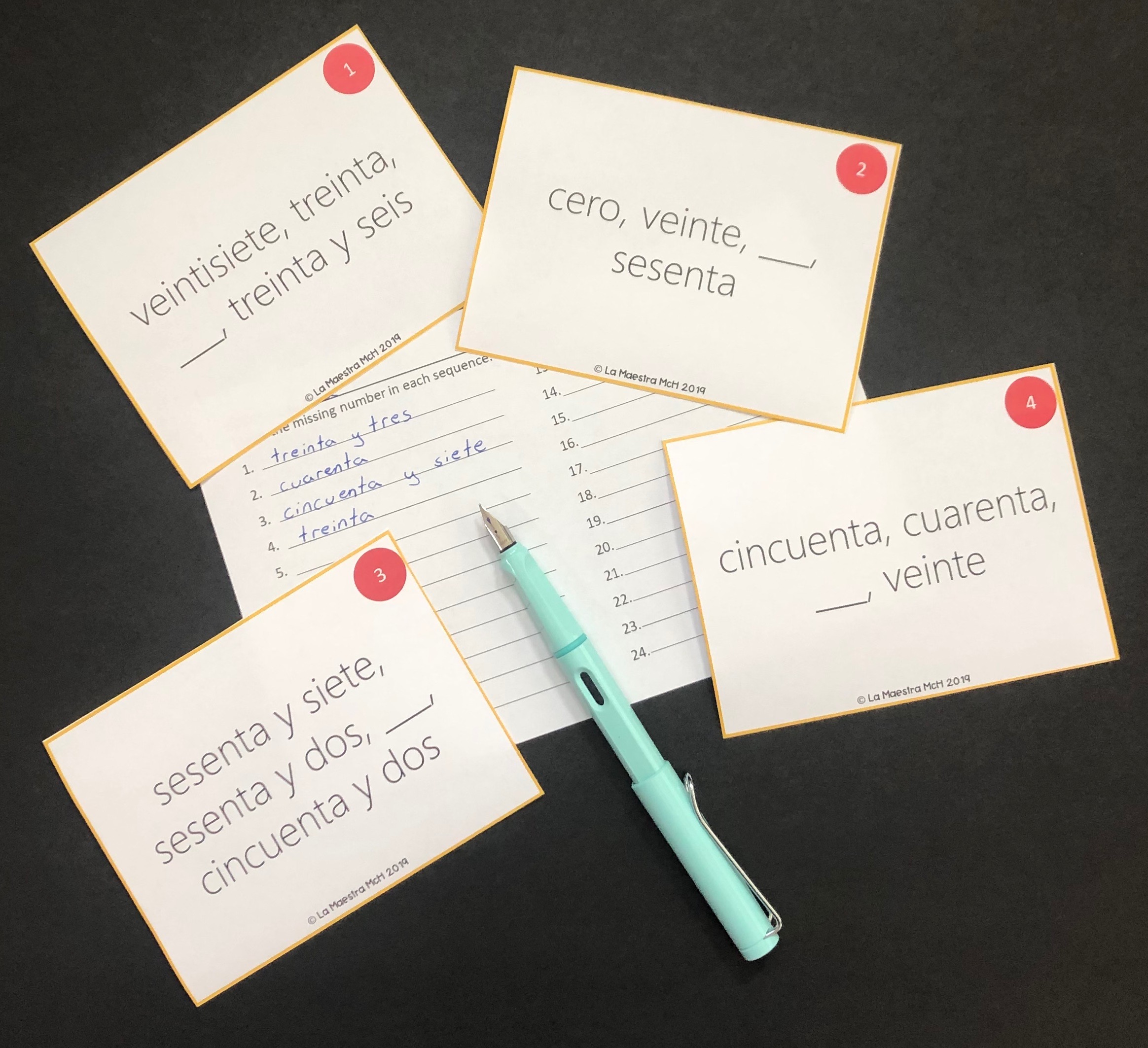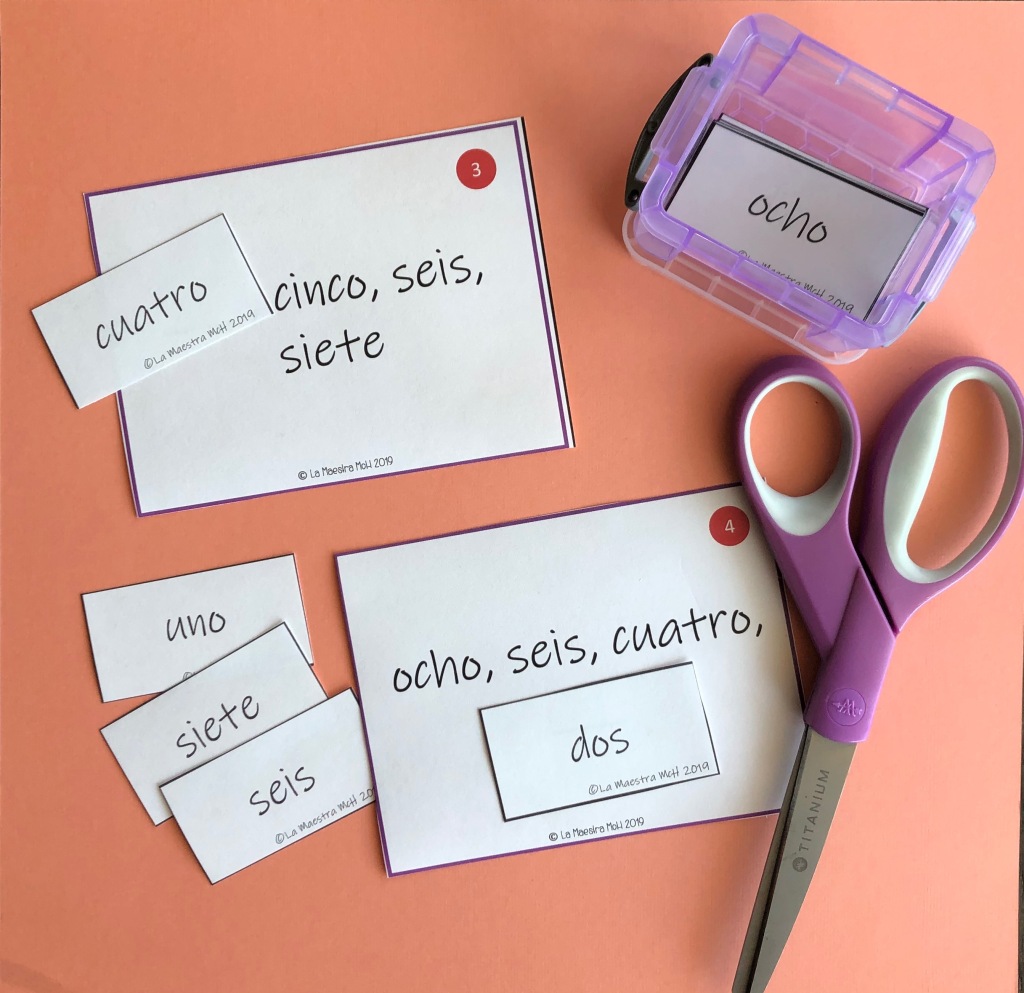7 Ways to Use Spanish Number Task Cards in High School Classes
As back to school time approaches, I’ve thought a lot about what I want to review as the year begins. Numbers are on the list. We use numbers for so many things, addresses, phone numbers, prices, times, and other practical communication goals that I felt it important to give my students a refresher. I’ve been creating several sets of Spanish number task cards for use with my high schoolers. Here are the different ways I plan on using them.
A Different Type of Task Card
Most Spanish number task cards I’ve run across seem geared towards younger students and are overly simple for high school students. It could be that I haven’t been looking in the right places but I decided to create my own. I’ve created two types of number task cards. The first involves a sequence of numbers with a blank the students need to fill in (_____ quince, diez, cinco). The second involves math problems written in words (cien más cien son…). Both of these offer repeated opportunities to read and interpret numbers in their written form as well as write them.

My Spanish number task cards for 20-60.
Grading Task Cards
I was recently asked how I grade task cards. The simple answer, I don’t. I use task cards purely for formative assessment or practice. They give students an opportunity to work with the material or practice a skill more. Task cards give me the opportunity to observe what students can do with the focus vocabulary or skill and determine how to move forward with instruction.
Now, if you want to grade them, here’s how I’ve occasionally done it. Let’s say there are 12 task cards. I choose 5 numbers at random (card 2, 5, 6, 8, 10) and check the students’ answers for those cards only and assign a formative 5 point grade. That’s the only way I’ve ever assigned points to this kind of formative practice.
Around the Room Activity
I love hanging cards around the room on the walls and for students to move around and answer. Any time students are up and moving, engagement is higher in my experience. This is a simple way to make what may be a simple activity, more interesting. I’ve also leveled up some of the task cards into a math set and higher numbers for more proficient students.
Manipulatives
I LOVE me some manipulatives. Late one night it dawned on me (ha! night, dawn) that I could easily make my Spanish number task cards into a physical matching manipulative activity. I’m creating smaller cards with all of the answers on them so rather than writing or saying the answer, students can find the answer and match it to the correct task card. Hello hands on differentiation!

Matching version of task cards
Stations
Rather than hanging the number task cards on the walls, use them as a station. Using my idea of manipulatives, I’d break down these 24 cards in my sets of Spanish number task cards into the following stations: read to your partner and say the answer, look and write the answer, use the answer cards and match the task card to the answer. An easy way to take one resource and hit different modes of communication and create several stations.
Speaking Activity
Rather than having students look at and read the cards themselves, pair students, students read the cards aloud to a partner to work on speaking and listening skills. The student who hears the cards can write the words they hear then fill in the missing word/solve the math problem. This is a great adaptation for novice learners as they become more comfortable with numbers 1-10
Old School Review Game
Laminate the cards, write point values on the back with dry erase markers, tape them to your board and voila you have an old school, paper review game! I teach in a 1:1 school and find that students often appreciate old school paper approaches.
Tape Them to the Back of Mini White Boards
If you have mini white boards, students can tape them to the back of mini white boards. Use a two-line/inside-outside circle format to answer the questions and write on the boards.
Use Them as Daily Warm Ups
Project a few or hand one to each student as they enter for a warm up activity.
Take Them Digital
Since COVID, I’ve adapted my tasks cards to remote teaching using GoFormative and Google Slides. You can see all my digital options here.






One Comment